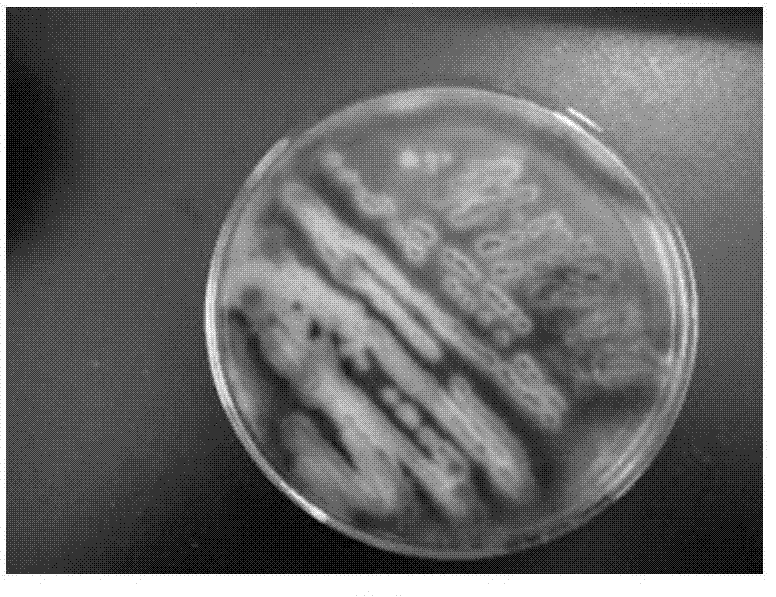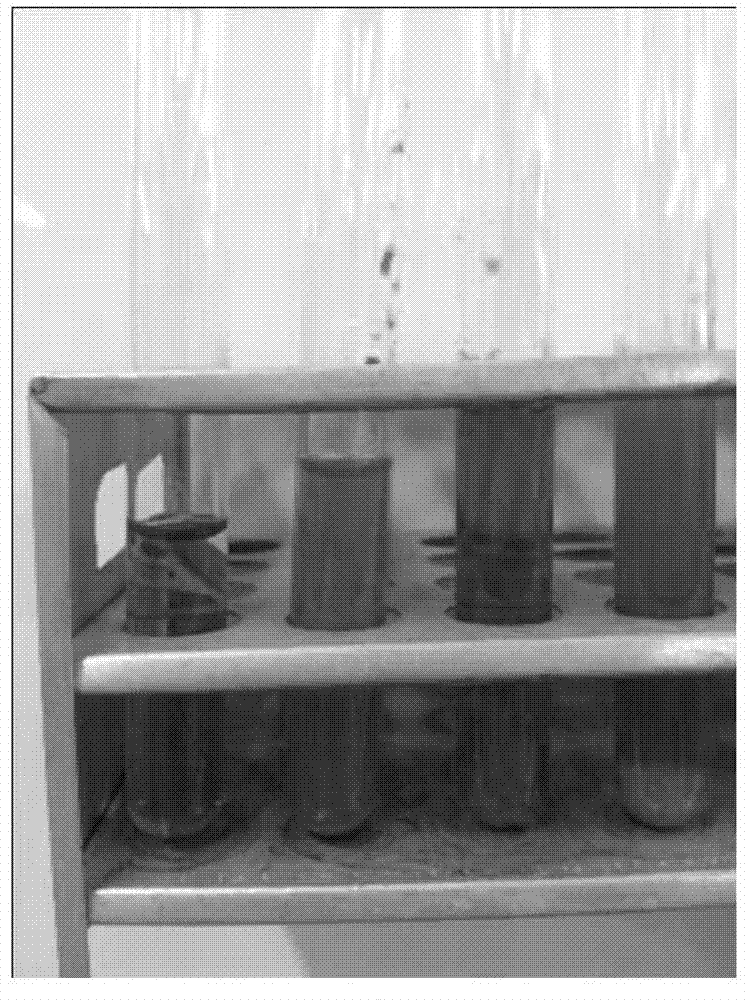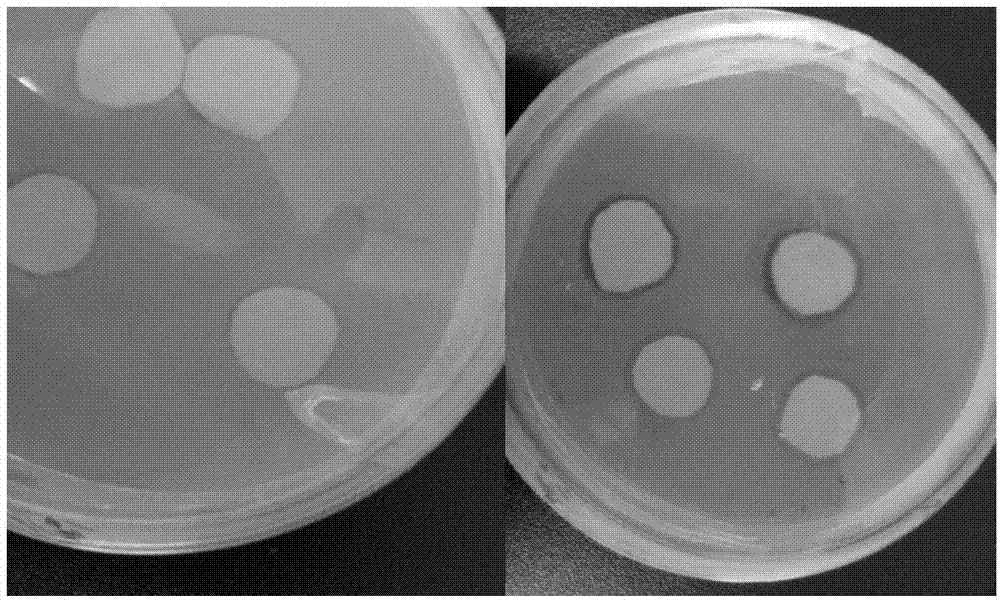Streptomyces albus and application thereof
A technology of Streptomyces albicans and white, which is applied in the direction of bacteria, microorganisms, fermentation, etc., can solve the problems of Streptomyces albicans, such as high requirements for culture conditions, complicated separation and purification process, and low ε-PL yield, so as to achieve easy separation and purification, culture medium Simple ingredients, good antibacterial effect
- Summary
- Abstract
- Description
- Claims
- Application Information
AI Technical Summary
Problems solved by technology
Method used
Image
Examples
Embodiment 1
[0021] Embodiment 1. Isolation and preservation of Streptomyces albicans Ls2
[0022] Streptomyces albicans Ls2 of the present invention is separated and obtained by following steps:
[0023] (1) The enrichment medium was used to enrich and cultivate the microorganisms in the soil collected from Hangzhou. The culture temperature was 28-30° C. and the culture time was 6-7 days to obtain white actinomycetes with dry edges and collapsed centers.
[0024] The composition of the enrichment medium is calculated in parts by weight:
[0025] 20 parts of soluble starch, 0.5 parts of sodium chloride, 1 part of potassium nitrate, 0.5 parts of dipotassium hydrogen phosphate, 0.5 parts of magnesium sulfate, 0.01 parts of ferrous sulfate, 0.66 parts of ammonium sulfate, 0.01 parts of zinc sulfate, 0.1 parts of yeast extract, weight 0.05 parts of potassium chromate, 15 parts of agar powder, and 1000 parts of water.
[0026] The method for preparing the enrichment medium is: weigh soluble s...
Embodiment 2
[0033] Embodiment 2. Utilize Streptomyces albicans Ls2 to produce ε-poly L-lysine
[0034](1) Inoculate the test tube species of Streptomyces albicans Ls2 in the liquid shake flask fermentation medium, the culture temperature is 28-30° C., and the culture time is 2 days to obtain the fermentation liquid, without adjusting the pH value during the culture process;
[0035] The composition of the liquid shake flask fermentation medium is calculated in parts by weight:
[0036] 5 parts of yeast extract, 50 parts of glucose, 10 parts of ammonium sulfate, 0.03 parts of ferrous sulfate, 0.5 parts of magnesium sulfate, 0.04 parts of zinc sulfate, 0.8 parts of dipotassium hydrogen phosphate, 1.36 parts of potassium dihydrogen phosphate, and 1000 parts of water;
[0037] The method for preparing the liquid shake flask fermentation medium is as follows: weigh yeast extract, ammonium sulfate, ferrous sulfate, magnesium sulfate, zinc sulfate, dipotassium hydrogen phosphate, and potassium d...
Embodiment 3
[0041] Example 3. Purification and detection of ε-poly L-lysine
[0042] Dissolve the ε-poly L-lysine obtained in Example 2 in deionized water, and perform adsorption analysis with a G-250 column to obtain ε-poly L-lysine with a purity of more than 98%, with a yield of 0.42 g / L fermentation broth. According to SDS-PAGE electrophoresis, the molecular weight of the ε-poly-L-lysine is about 3000Da.
[0043] Get the epsilon-poly L-lysine of embodiment 2 gained and dissolve with deionized water, make the solution that concentration is 0.1 gram per liter, carry out the filter paper sheet bacteriostasis test, the result shows that it is to escherichia coli and Staphylococcus aureus all. have a significant inhibitory effect, such as Figure 3a and 3b shown.
[0044] After storing the ε-poly-L-lysine obtained in Example 2 in a refrigerator at 4° C. for one month, the molecular weight and antibacterial properties did not change.
PUM
| Property | Measurement | Unit |
|---|---|---|
| Molecular weight | aaaaa | aaaaa |
Abstract
Description
Claims
Application Information
 Login to View More
Login to View More - R&D
- Intellectual Property
- Life Sciences
- Materials
- Tech Scout
- Unparalleled Data Quality
- Higher Quality Content
- 60% Fewer Hallucinations
Browse by: Latest US Patents, China's latest patents, Technical Efficacy Thesaurus, Application Domain, Technology Topic, Popular Technical Reports.
© 2025 PatSnap. All rights reserved.Legal|Privacy policy|Modern Slavery Act Transparency Statement|Sitemap|About US| Contact US: help@patsnap.com



